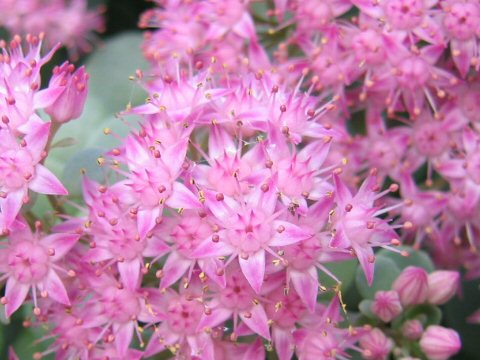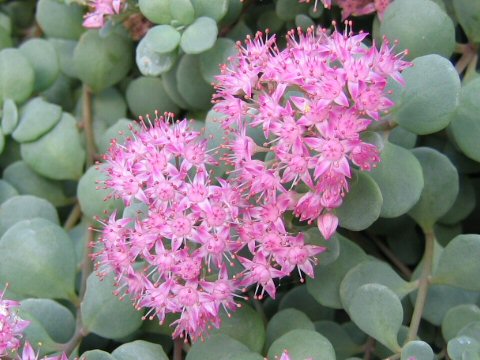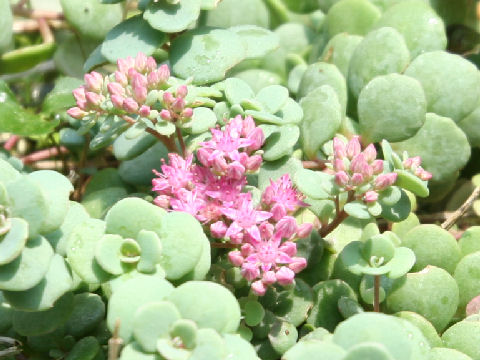
|
The Siebold's stonecrop (Hylotelephium sieboldii) belongs to Crassulaceae (the Orpine family). It is an evergreen herb that is endemic to Japan and grows wild only on Kankakei Gorge in Shodoshima Island, Kagawa Prefecture and in Totsukawa Village in Nara Prefecture. It is believed to have once been more widely distributed, but its numbers have declined dramatically and it is now listed as an endangered species (EN). It grows in rocky gravel areas along rivers, with slender stems that are 15 to 20 cm tall. The leaves are bluish-greenish-gray, ovate to circular, and 3-lobed. Dark pink flowers bloom in profusion at the top of the stem from September to October. Its Japanese name is a variant of the ancient word "misebaya", meaning "to show". The name is derived from the waka poem "Kimi ni mise-baya" (I want to show it to you) that was written by a monk from Yoshinoyama, who was a student of the waka poet Reizei Tamehisa (1686-1741), a lord in the mid-Edo period, when he presented this flower as a gift. It is also called "Tama-no-o" in Japan.
|







